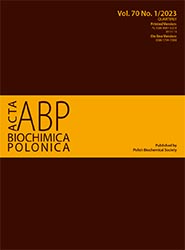Long noncoding RNA TPTEP1 suppresses diabetic retinopathy by reducing oxidative stress and targeting the miR-489-3p/NRF2 axis
Abstract
Background: Diabetic retinopathy (DR) is a diabetic complication with complex etiology and severe visual impairment. Dysregulated long noncoding RNAs (lncRNAs) are closely associated with DR. This article focused on the impact of lncRNA transmembrane phosphatase with tensin homology pseudogene 1 (TPTEP1) in DR. Methods: First, sera were collected from DR patients and healthy control. Human retinal vascular endothelial cells (HRVECs) were exposed to high glucose (HG) to construct a DR model in vitro. A real-time quantitative polymerase chain reaction (RT-qPCR) was carried out to detect TPTEP1. Targeting relationships were predicted using StarBase and TargetScan, and confirmed by the Dual-Luciferase Reporter Assay. Cell Counting Kit 8 (CCK-8) and EdU staining were applied to measure cell viability and proliferation, respectively. Protein expression was determined by a western blotting assay. Results: lncRNA TPTEP1 expression was significantly decreased in the serum of DR patients and HG-stimulated HRVECs. Overexpression of TPTEP1 reduced cell viability and proliferation induced by HG and oxidative stress. In addition, overexpression of miR-489-3p impaired the effects of TPTEP1. Nrf2, which was targeted by miR-489-3p, was down-regulated in HG-treatment HRVECs. Knockdown of Nrf2 enhanced the influence of miR-489-3p and antagonized the effects of TPTEP1. Conclusion: This study demonstrated that a TPTEP1/miR-489-3p/NRF2 axis affects the development of DR by regulating oxidative stress.
Acta Biochimica Polonica is an OpenAccess quarterly and publishes four issues a year. All contents are distributed under the Creative Commons Attribution-ShareAlike 4.0 International (CC BY 4.0) license. Everybody may use the content following terms: Attribution — You must give appropriate credit, provide a link to the license, and indicate if changes were made. You may do so in any reasonable manner, but not in any way that suggests the licensor endorses you or your use.
Copyright for all published papers © stays with the authors.
Copyright for the journal: © Polish Biochemical Society.


